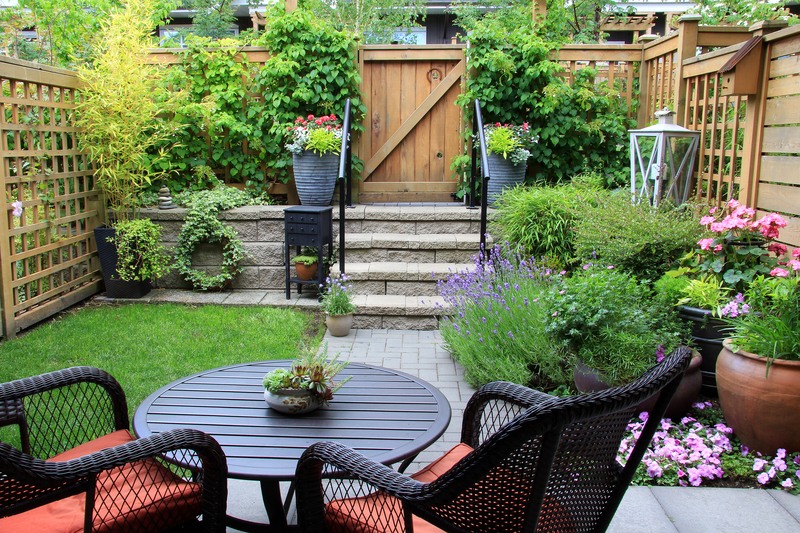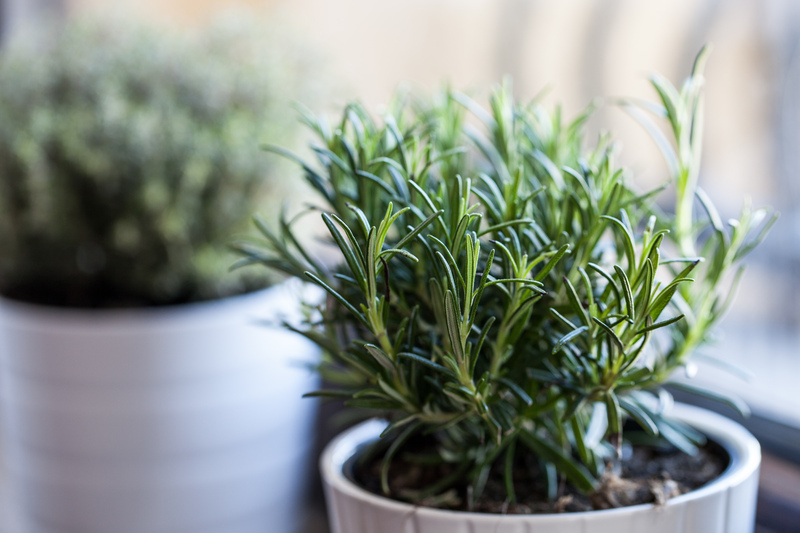Expert Advice on Avoiding Regrowth After Stump Removal
When a tree is cut down, the visible trunk is only part of the picture. Tree stumps left in the ground can quickly become a persistent annoyance if they start to sprout new shoots. For homeowners and property managers seeking a definitive solution, preventing stump regrowth is crucial. In this comprehensive guide, we'll share proven tips and expert advice on how to avoid regrowth after stump removal, the science behind why it occurs, and the best strategies for long-term success.
Understanding Stump Regrowth: Why Do Trees Sprout After Removal?
Roots are the lifeline of a tree. Even after the main stem is removed, the root system can remain alive beneath the surface. This is why you may see fresh shoots emerging weeks or even months after a tree has been cut. Here's why:
- Stored Energy: Roots contain stored carbohydrates and nutrients. If the root system is healthy, it can generate new shoots (suckers) in an attempt to survive.
- Adventitious Buds: Trees develop buds on roots and at the stump base. These may activate once the main trunk is gone.
- Species-Specific Response: Certain species - like maple, willow, poplar, and elm - are more prone to regrowing aggressively after cutting.
Preventing regrowth after stump removal starts with understanding these biological mechanisms. Knowledge empowers you to select the best approach for your landscape.

The Risks of Neglecting Stump Regrowth
Failing to address stump regrowth can cause several issues for your yard and property:
- Unwanted saplings and brush can rapidly reclaim your lawn or garden.
- Persistent root systems may interfere with foundation, plumbing, and sidewalks.
- Regrowth often attracts pests such as termites, ants, or fungi to an aging stump.
- The area becomes unsightly and difficult to maintain.
With this in mind, let's look at the most effective and sustainable techniques for avoiding regrowth after stump removal.
Stump Removal Vs. Stump Grinding: Which Is More Effective?
Before we dive into post-removal options, it's essential to understand the two main methods of getting rid of a stump:
- Stump Grinding: This method grinds the stump into woodchips just below the soil level. Some roots remain intact, which can sometimes enable regrowth.
- Stump Removal: Complete removal involves extracting the stump and most of the major roots. This decreases the possibility of regrowth but can disturb more earth and landscaping.
For the best results in preventing regrowth, opt for complete stump and root removal. If this isn't possible, read on for expert recommendations to manage any remaining roots.
Expert-Recommended Methods to Prevent Stump Regrowth
1. Immediate Post-Removal Treatments
Direct action after stump removal is the most effective strategy. The sooner you treat the remaining area, the less likely you'll encounter regrowth.
-
Apply a Systemic Herbicide:
- Choose a product containing glyphosate or triclopyr.
- Apply directly onto freshly exposed wood or roots, ideally within 30-60 minutes of cutting.
- *Carefully follow all label directions and wear protective gear.*
-
Remove Surface Suckers as Soon as They Appear:
- Persistent pruning will eventually deplete the root reserves, making regrowth less likely.
-
Mulch the Area Generously:
- Add a thick layer (3-6 inches) of mulch to block sunlight and reduce sprouting.
2. Chemical Solutions for Stubborn Stump Regrowth
Using chemicals to stop stump regrowth can be remarkably effective under the right circumstances. Here's how to do it safely and responsibly:
- Drill & Fill Method: Drill deep holes into the remaining wood. Fill each with your chosen herbicide or a salt-based stump killer. Cover the stump or roots to preserve moisture and encourage deeper absorption.
- Paint the Fresh Cut: For resprouting stumps, make a fresh cut then immediately paint the exposed wood with a non-selective herbicide.
- Epsom Salt or Rock Salt: Non-chemical, yet potent. Drill holes into the stump and roots; fill with Epsom salt or rock salt, water thoroughly, and cover. Be patient--this can take several months.
Warning: Always follow local regulations regarding chemical use. Protect neighboring plants and water sources.
3. Organic and Manual Approaches to Stop Regrowth
- Physical Barriers: After removing the stump, excavate and cut any visible root suckers. Use landscaping fabric or plastic sheeting covered with soil or mulch to deprive roots of sunlight and slow growth.
- Sheet Mulching: Layer cardboard and organic mulch over the area. This smothers young sprouts and accelerates decomposition of any remaining roots.
- Consistent Mowing or Pruning: Cutting new shoots at ground level repeatedly will, over time, exhaust the plant's stored energy.
These manual and organic methods are popular with those seeking an *eco-friendly approach to prevent regrowth after stump removal*.
Best Practices for Maintaining a Stump-Free Landscape
- Monitor the Area Regularly: Check for new growth monthly, especially during the first year.
- Remove Suckers Quickly: Small sprouts are easier to control than large saplings.
- Consider Professional Monitoring: Landscapers and tree care experts can provide ongoing support and advanced treatments if regrowth persists.
- Improve Drainage and Topsoil: Re-landscaping with better soil and drainage can deter regrowth in persistent species.
Common Mistakes to Avoid After Stump Removal
- Ignoring Root Systems: Only removing the visible stump and not addressing roots can lead to vigorous resprouting.
- Delaying Treatment: Waiting too long to apply herbicide or organic solutions can decrease effectiveness.
- Improper Use of Chemicals: Not following product instructions or overusing can damage your yard or violate environmental guidelines.
- Neglecting Routine Inspections: Regrowth is easiest to address when detected early.
Frequently Asked Questions About Preventing Stump Regrowth
How long does it take for a tree stump to stop sprouting?
The timeline depends on the species, stump size, and method used. Chemical treatments may resolve the issue in weeks to months, while organic or manual methods may require a full growing season or longer.
Will stump grinding alone prevent new shoots from appearing?
No, not always. Stump grinding leaves most of the root system in place. Some trees, especially vigorous species, can still resprout from underground roots if left untreated.
Does pouring concrete over the stump area help?
Pouring concrete is rarely recommended. It may restrict growth, but buried roots can still send up shoots around the edges. It's better to treat the root system directly for lasting results.
When should I call a professional tree removal service?
If you've tried multiple treatments without success--or if the stump is from a very large or invasive tree species--consulting a certified arborist or tree care expert may be the most reliable solution.

Expert Tips for Long-Term Success
- Choose Native or Non-Invasive Trees: When planting new trees, select species less prone to aggressive root sprouting.
- Plan Your Yard Layout: Avoid planting large-root trees too close to infrastructure, minimizing future stump or root issues.
- Invest in Quality Stump Removal: Hiring experienced, well-reviewed professionals can save time and costs compared to repeat treatments.
Summary: Your Best Strategy to Avoid Stump Regrowth
Preventing regrowth after stump removal requires a proactive, multi-step approach. Here are your essential actions:
- Completely remove the stump and as many roots as possible.
- Apply herbicide or a natural stump killer directly after cutting.
- Monitor and remove new shoots promptly.
- Maintain ground cover or mulch to block sunlight.
- Seek expert advice for stubborn regrowth or valuable trees.
With patience and the right techniques, you can ensure a stump-free, beautiful landscape without the hassle of new sprouts. By following these expert tips on avoiding regrowth after stump removal, you'll prevent invasive shoots and protect your outdoor investment for years to come.
Ready to Reclaim Your Landscape?
Don't let old stumps ruin your yard or garden. Take action today with these proven, expert-approved strategies to prevent stump regrowth and enjoy lasting curb appeal.
For personalized advice, reach out to a certified arborist or landscaping professional in your area!